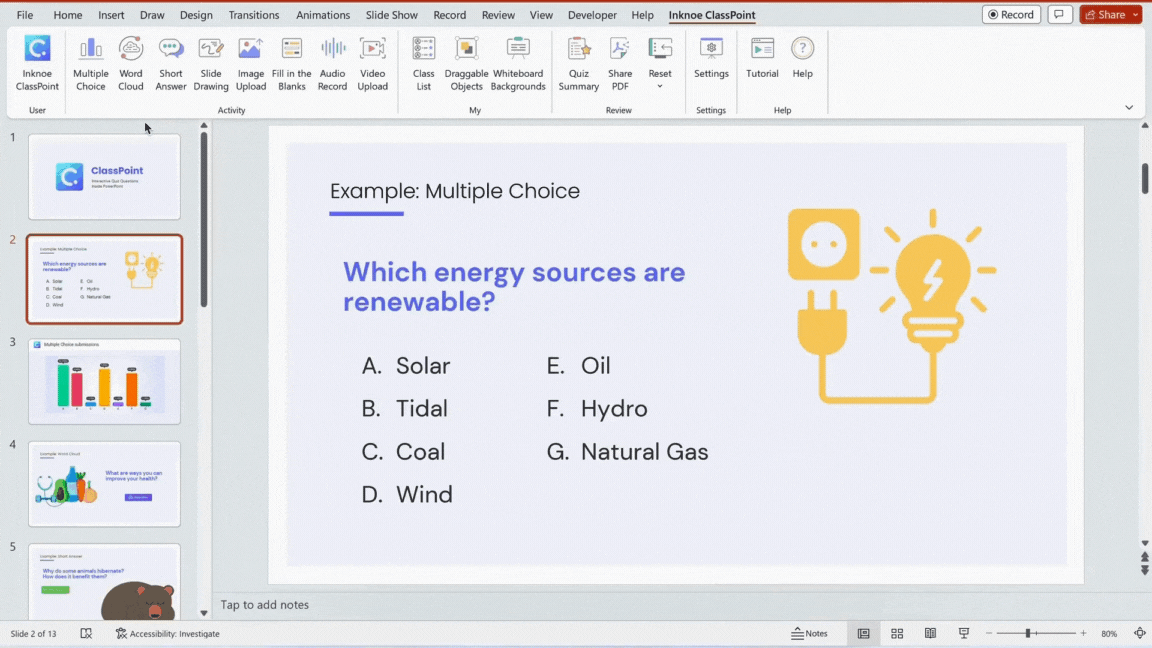Lectures have long been a staple of traditional education, but their effectiveness in keeping students engaged and retaining information has been called into question. Students often struggle to stay focused during long lectures, leading to decreased learning outcomes and lower academic performance.
As educators, it is crucial to find ways to create engaging lectures that can capture and maintain students’ focus throughout the learning process. Why? Engaging lectures have been shown to improve student motivation, retention of information, and academic performance.
So how does one keep students engaged during lectures? Active learning.
When students are actively involved in their learning, they are more likely to remain engaged and motivated. So how do you achieve active learning during lectures? In this article, we’ll explore how active learning methods, such as group discussions, problem-solving, and other interactive techniques, can help students retain information more effectively, and how improving student engagement during lectures can lead to better student learning outcomes.

What is active learning?
Active learning is a teaching approach that encourages students to participate actively in the learning process, rather than just passively receiving information. This can involve a wide range of activities, from group discussions and problem-solving exercises to interactive in-class activities and peer teaching. The goal of active learning is to increase student engagement and improve learning outcomes by creating a more interactive and dynamic classroom experience.
Active learning can take many forms and can be tailored to fit a variety of learning environments. For example, in a Science class, active learning might involve students conducting experiments or engaging in simulations to better understand scientific concepts. In a Literature class, active learning might involve group discussions or creative writing exercises to help students analyze and interpret literary works.
How engaging lectures help students
When it comes to teaching, keeping students engaged is a challenge that most educators face. However, the benefits of creating engaging lectures go above and beyond just capturing students’ focus and attention. By ensuring lectures are engaging and students are being involved in the learning process, you can help them develop a multitude of skills.
Here are all the ways in which engaging lectures benefit students and how active learning plays a key role in achieving them:
1. Improved retention of information
- Lectures that incorporate active learning methods, such as group discussions and problem-solving activities, help students connect new information to their prior knowledge. This facilitates better recall and retention of the material, which in turn can lead to improved academic performance.
2. Increased motivation
- By using engaging materials and examples, and allowing students to take an active role in their learning, lectures can boost students’ motivation to learn. Active learning techniques, such as collaborative projects and real-world simulations, can further enhance motivation by providing students with a sense of ownership over their learning process.
3. Better academic performance
- When lectures are designed to be engaging, students are more likely to participate in class discussions, ask questions, and interact with their peers. This increased engagement and active participation can lead to a better understanding of the material, which in turn can translate into higher grades and improved academic performance.
4. Development of important skills
- Engaging lectures can help students develop essential skills such as critical thinking, problem-solving, and communication. Active learning techniques, such as role-playing and case studies, can offer students the opportunity to apply these skills in real-world situations and prepare them for future academic and career success.
5. Preparation for future careers
- Engaging lectures can help students acquire the skills and knowledge they need to succeed in their future careers. By integrating active learning techniques that emphasize teamwork and leadership, lectures can provide students with the practical experience and confidence they need to excel in the workplace.
One thing that all of these benefits have in common is that they depend on how a lecture is delivered. A good way to give one is through interactive learning, which involves getting students engaged with activities and group learning. A professor from Harvard Graduate School of Education explained that after incorporating interactive teaching via student polls and partner discussions, his students became more invested in the learning, improved their understanding, and “doubled the learning gains.”
“Active learning, not passive, makes it impossible to sleep through a class.”
Eric Mazur, Balkanski Professor of Physics and Applied Physics at the Harvard School of Engineering and Applied Sciences
4 Ways to incorporate active learning into lectures
Active learning is a powerful teaching strategy that can help you create a more engaging and effective learning environment. By incorporating interactive activities and techniques into lectures, you can encourage students to take an active role in their own learning.
Let’s explore several methods for incorporating active learning into lectures, including the use of an EdTech tool, ClassPoint!
1. Quiz your audience
One way that you can make sure that your students are grasping the lecture you are presenting is by asking them questions about the material to get them to actively participate and apply what they are learning. This can be done in a number of ways, such as voting clickers, running audience response quiz questions, or writing answers on whiteboards if they don’t have devices. By posing questions to the class and asking students to respond in real-time, you can gauge student understanding and unlock active participation, especially with an EdTech tool.
By incorporating interactive questions into lectures, you can:
- Encourage active participation and engagement from all students
- Practice recall encouraging learning/comprehension & igniting retention
- Receive immediate feedback on student understanding and adjust instruction accordingly
- Spark discussion and debate among students by asking open-ended questions
- Create a more inclusive classroom by allowing all students to participate, including those who may be hesitant to speak up in class
To run an audience response question without learning a new tool or juggling multiple windows, try the Microsoft PowerPoint add-in, ClassPoint.
ClassPoint is an all-in-one audience engagement tool that enhances PowerPoint with teaching & presentation tools and interactive quiz questions. There are a variety of question types to choose from including Multiple Choice, Short Answer,Word Cloud, and other multi-media questions like Image Upload. You can easily create and run questions directly from your PowerPoint presentation and see real-time results, allowing you to instantly and effectively gauge student understanding.

2. Think-Pair-Share
Think-Pair-Share is an interactive teaching technique that can significantly enhance student engagement during lectures. The process involves asking students to reflect on a question or concept individually, before discussing it with a partner, and then sharing their thoughts with the rest of the class. This approach promotes critical thinking, collaboration, and communication skills, and allows students to actively engage with the material.
By incorporating Think-Pair-Share into lectures, you can:
- Encourage students to think more deeply about the material and develop their own ideas
- Help students build confidence in expressing their thoughts and opinions
- Develop students’ communication skills and critical thinking
Incorporating Think-Pair-Share into lectures can be made even easier with the help of ClassPoint’s random Name Picker tool can be used to randomly & conveniently group students for the “Pair” part of Think-Pair-Share. This not only saves time and effort but also ensures that students have the opportunity to work with different peers, no bias.

3. Case study assignments
Assigning case studies can effectively keep students engaged during lectures, and it can help you create meaningful lectures. By presenting real-world scenarios and problems, students can apply their knowledge and skills in a practical setting, which promotes critical thinking, problem-solving, and decision-making skills. Case studies also allow students to develop a deeper understanding of the subject matter, and can be used to spark class discussions and debates.
In addition, case studies can:
- Encourage collaboration and teamwork among students, as they work together to analyze and solve the problem presented in the case study.
- Foster creativity and innovation, as students are encouraged to think outside the box to find solutions to complex problems.
- Provide a more engaging and memorable learning experience, as students are more likely to remember information that is presented in the context of a real-world scenario.
4. Flipped classroom
In a flipped classroom, students are provided with materials to review before class, and class time is used for discussion, problem-solving, and other interactive activities. This allows students to take a more active role in their own learning and promotes deeper understanding of the material as they get to grasp into information at their own pace.
A flipped classroom approach offers several benefits that can significantly enhance student engagement and learning. Some of these benefits include:
- Provides students with a more personalized learning experience
- Provides opportunities for students to apply their own knowledge and skills
- Helps to promote time management and organization skills
- Allows for more flexibility in scheduling and pacing of learning
Conclusion
In conclusion, creating engaging lectures is a crucial aspect of effective teaching. Lectures that incorporate active learning methods not only improve student motivation and engagement but also help students retain information better, and develop essential skills.
Using technology tools like ClassPoint can facilitate incorporating interactive activities into lectures, promoting active learning strategies. As teachers, we must strive to create engaging lectures that foster an open and conducive learning environment. Give ClassPoint a try to enhance your lectures and promote active learning in your classroom. Your students will thank you for it, and you may be surprised at how much more enjoyable and effective teaching can be with this powerful tool!